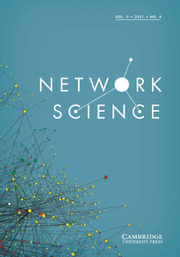Article contents
Learning to count: A deep learning framework for graphlet count estimation
Published online by Cambridge University Press: 11 September 2020
Abstract
Graphlet counting is a widely explored problem in network analysis and has been successfully applied to a variety of applications in many domains, most notatbly bioinformatics, social science, and infrastructure network studies. Efficiently computing graphlet counts remains challenging due to the combinatorial explosion, where a naive enumeration algorithm needs O(Nk) time for k-node graphlets in a network of size N. Recently, many works introduced carefully designed combinatorial and sampling methods with encouraging results. However, the existing methods ignore the fact that graphlet counts and the graph structural information are correlated. They always consider a graph as a new input and repeat the tedious counting procedure on a regular basis even if it is similar or exactly isomorphic to previously studied graphs. This provides an opportunity to speed up the graphlet count estimation procedure by exploiting this correlation via learning methods. In this paper, we raise a novel graphlet count learning (GCL) problem: given a set of historical graphs with known graphlet counts, how to learn to estimate/predict graphlet count for unseen graphs coming from the same (or similar) underlying distribution. We develop a deep learning framework which contains two convolutional neural network models and a series of data preprocessing techniques to solve the GCL problem. Extensive experiments are conducted on three types of synthetic random graphs and three types of real-world graphs for all 3-, 4-, and 5-node graphlets to demonstrate the accuracy, efficiency, and generalizability of our framework. Compared with state-of-the-art exact/sampling methods, our framework shows great potential, which can offer up to two orders of magnitude speedup on synthetic graphs and achieve on par speed on real-world graphs with competitive accuracy.
Keywords
Information
- Type
- Research Article
- Information
- Copyright
- © The Author(s), 2020. Published by Cambridge University Press
Footnotes
Special Issue Editor: Hocine Cherifi
References
- 3
- Cited by

